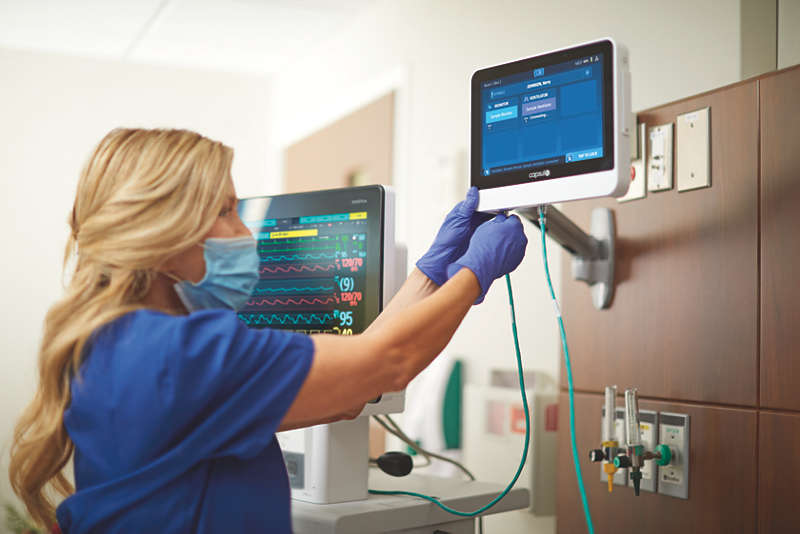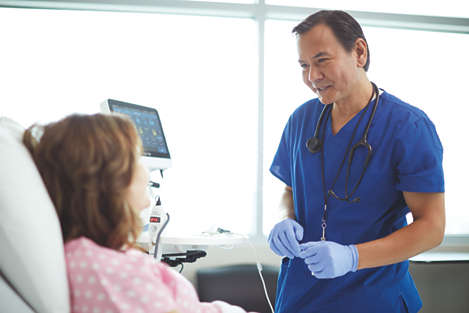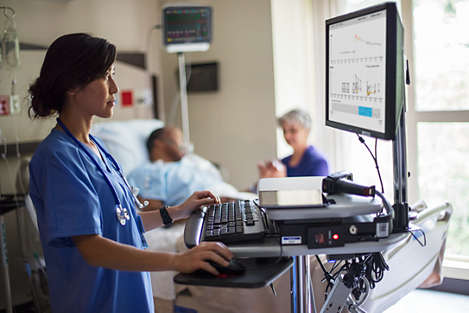How Rosetta Terminology Mapping (RTM) translates to more efficient research and device integration
Article ∙ By Philips Healthcare ∙ júl 07, 2023 ∙ 2 min read
Health information managers (HIM) are using RTM because medical devices speak their own language. Devices from different manufacturers or from the same manufacturers built at different times present vital signs using variable data element identifiers.
To conduct clinical surveillance on a single patient, this lack of standardization is usually not a big problem. However, performing surveillance or research across a large cohort of patients presents a time-consuming and costly normalization process for providers and researchers.
Data normalization enables an apples-to-apples information comparison, crucial in healthcare due to the exponential growth of data from other providers, devices and technologies.
Article at a glance

Devices speaking their own languages
The Rosetta Stone helped British and French scholars of the early 1800s decipher ancient Egyptian hieroglyphs.1 Etched in the stone tablets was a translation of the hieroglyphs written in ancient Greek, which helped unlock the meaning of the Egyptian symbols.
Two hundred years later, healthcare information management professionals now have a digital version of the stone: Rosetta Terminology Mapping (RTM). Health information managers (HIM) are using RTM because medical devices speak their own language. Devices from different manufacturers or from the same manufacturers built at different times present vital signs using variable data element identifiers.
To conduct clinical surveillance on a single patient, this lack of standardization is usually not a big problem. However, performing surveillance or research across a large cohort of patients presents a time-consuming and costly normalization process for providers and researchers.
Data normalization crucial for interoperability
Data normalization enables an apples-to-apples information comparison, crucial in healthcare due to the exponential growth of data from other providers, devices and technologies. To normalize this information, numerous data standards in healthcare were created, including:
These standards help providers communicate effectively and efficiently with each other, but medical device outputs are for the most part still not unified under a similar single terminology standard. For example, consider a non-invasive blood pressure (NIBP) identifier. On one type of patient monitor, the identifier is 16; on a different monitor by the same manufacturer, the identifier is 2667. Some hospitals and researchers manually unify variable identifiers using in-house developed data standards, which can add significant time and effort. Proprietary data standards also hinder healthcare organizations’ ability to share research data with another party since one standard will need to be translated to another, risking data integrity. In addition, disparate data outputs make the integration of new devices with the electronic health record (EHR) more costly and timeconsuming. Such integrations may even be delayed or prevented since manual normalization and verification of data from medical devices can easily consume weeks of effort,2 which is prohibitive for some hospitals.
How Rosetta Terminology Mapping helps device integration
RTM offers an industry-recognized method to normalize these different identifiers under a common standard. Integrating the Healthcare Enterprise (IHE), a consortium of healthcare and industry experts focused on improving healthcare information sharing, created RTM with input from around the world. With RTM, IHE aims to harmonize the use of existing nomenclature “to facilitate safe and interoperable communication between devices and systems.”3
When RTM is native to the device, it helps speed device connectivity to other systems and improves clinician and researcher workflow efficiency. For example, in the NIBP identifier example mentioned above, although different monitors would identify the output using different identifiers, RTM would normalize these varying outputs to a single, consistent code recognized by all systems.
Philips Capsule is actively working with device manufacturers to help incorporate RTM into their technologies so the data outputs produced can be more easily standardized to support clinical surveillance, research or both. For example, Phillips Capsule announced that Retia Medical incorporated RTM into its updated Argos Cardiac Monitor using the Philips Capsule Device Driver Interface (DDI) development strategy, which streamlines the normalization of outputs from the device for end users.
Footnotes
[1] The British Museum. “Everything you ever wanted to know about the Rosetta Stone.” Blog. Accessed January 26, 2021. blog.britishmuseum.org/everything-you-everwanted-to-know-about-the-rosetta-stone/
[2] Zaleski, John R., Ph.D., “Medical Device Interoperability and Data Integration to Clinical Information Systems: Medical Device Data Alignment.” Biomed Instrum Technol (2012). meridian.allenpress.com/bit/article/46/s2/65/142359/Medical-Device-Interoperability-and-Data. Accessed January 26, 2021
[3] Integrating the Healthcare Enterprise. “PCD Profle Rosetta Terminology Mapping Overview.” Accessed January 25, 2021. wiki.ihe.net/index.php/PCD_Profle_Rosetta_Terminology_Mapping_Overview


